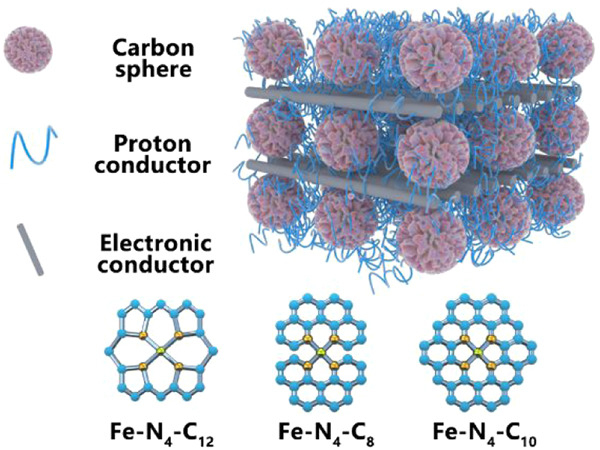Hierarchically mesoporous carbon spheres coated with a single atomic Fe–N–C layer for balancing activity and mass transfer in fuel cells
Release time:2022-07-14 Hits:

Journal:Carbon Energy
Abstract:Novel cost-effective fuel cells have become more attractive due to the demands for rare and expensive platinum-group metal (PGM) catalysts for mitigating the sluggish kinetics of the oxygen reduction reaction (ORR). The high-cost PGM catalyst in fuel cells can be replaced by Earth-abundant transition-metal-based catalysts, that is, an Fe–N–C catalyst, which is considered one of the most promising alternatives. However, the performance of the Fe–N–C catalyst is hindered by the low catalytic activity and poor stability, which is caused by insufficient active sites and the lack of optimization of the triple-phase interface for mass transportation. Herein, a novel Fe–N–C catalyst consisting of mono-dispersed hierarchically mesoporous carbon sphere cores and single Fe atom-dispersed functional shells are presented. The synergistic effect between highly dispersed Fe-active sites and well-organized porous structures yields the combination of high ORR activity and high mass transfer performance. The half-wave potential of the catalyst in 0.1 M H2SO4 is 0.82 V versus reversible hydrogen electrode, and the peak power density is 812 mW·cm−2 in H2–O2 fuel cells. Furthermore, it shows superior methanol tolerance, which is almost immune to methanol poisoning and generates up to 162 mW·cm−2 power density in direct methanol fuel cells.
Indexed by:Journal paper
Document Type:J
Translation or Not:no
Date of Publication:2021-08-04
DOI number:10.1002/cey2.136
First Author:Chengyong Shu
Co-author:Zhuofan Gan,Wei Du,Chengwei Deng,Qiang Tan
Correspondence Author:杨晓冬(教师)
Links to published journals:https://onlinelibrary.wiley.com/doi/10.1002/cey2.136
